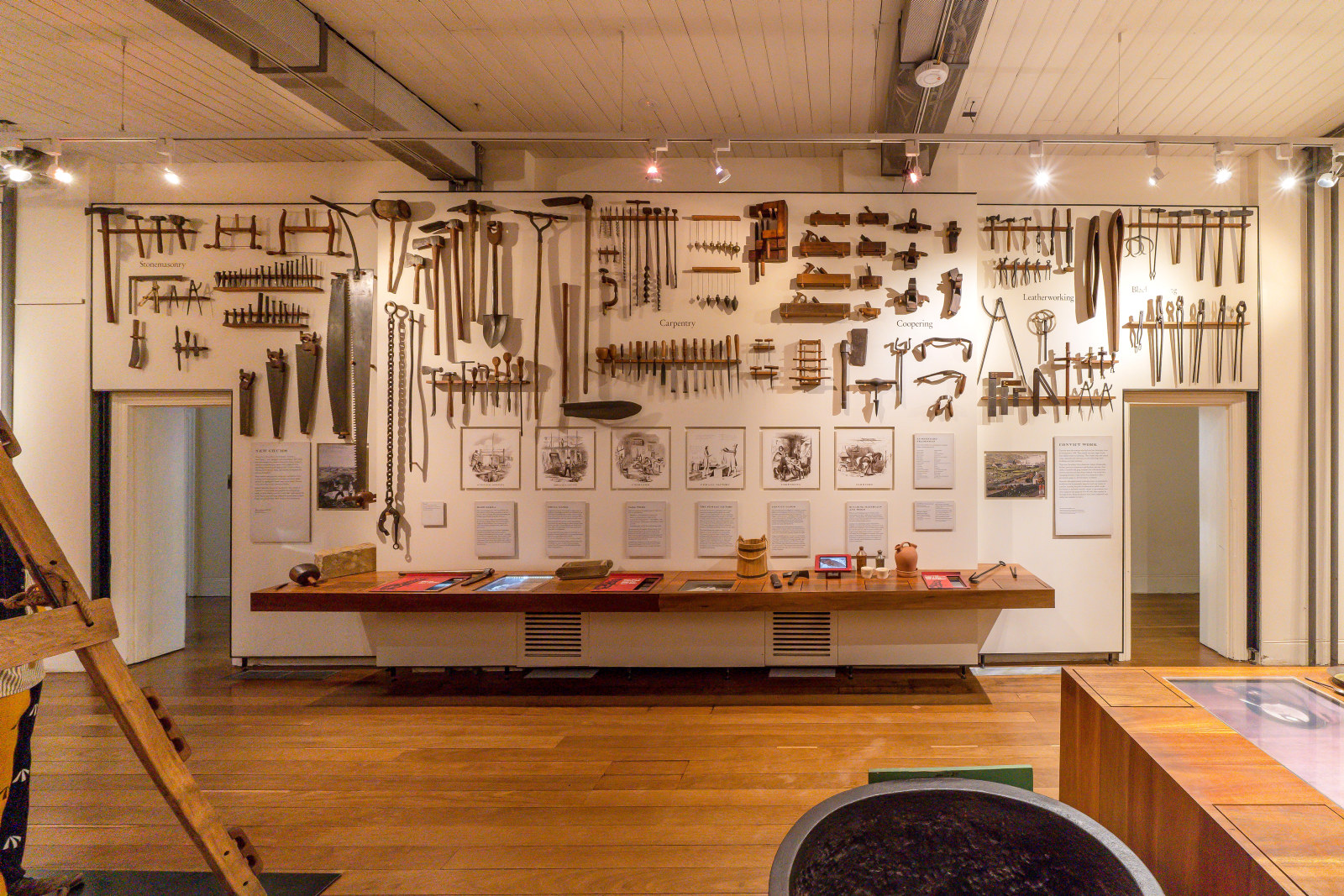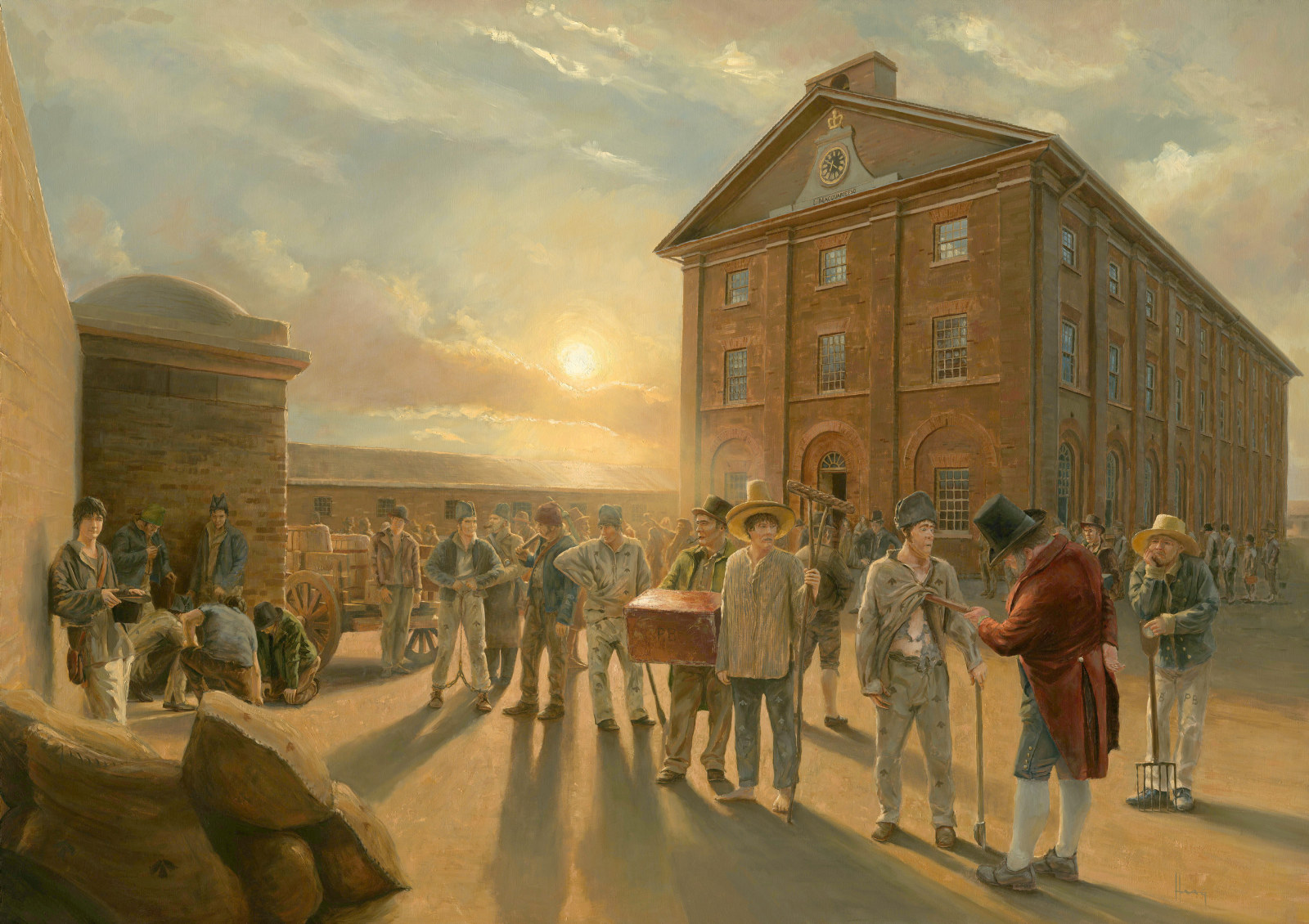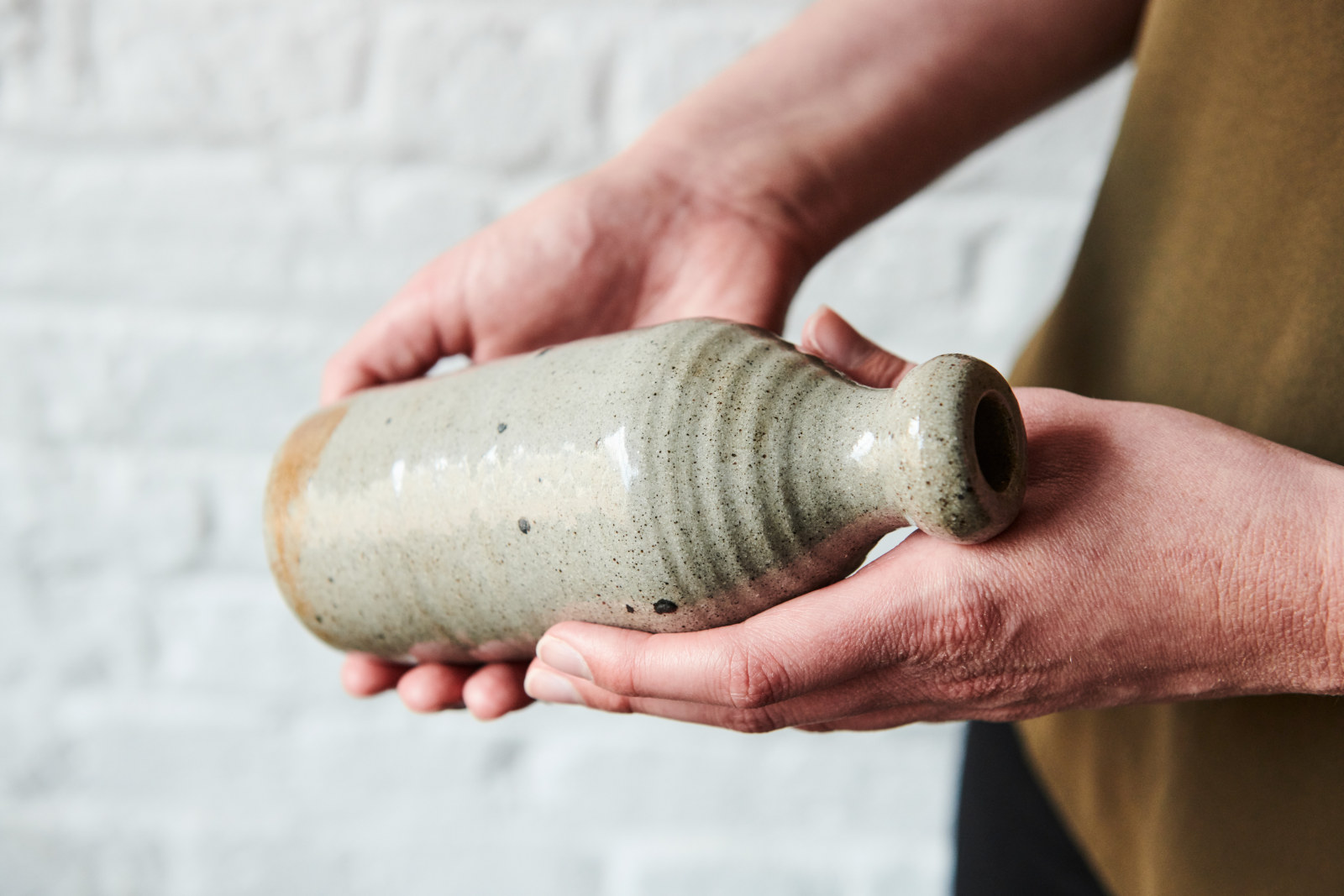Iron Gang Chain
Nineteenth century
Convicts who re-offended after arriving in the colony could be assigned to do hard labour in an iron gang, building and repairing roads and bridges at the frontiers such as on the western road over the Blue Mountains to Bathurst and the Great North Road to the Hunter Valley. Each man in the gang wore a set of leg irons, hot-riveted on by a blacksmith. When being mustered and marched to work, each man’s irons were attached to a gang chain like this one, to keep the men together, and to prevent any from escaping into the bush. Six men could be fitted to this gang chain, by extra lockable basils (rings) attached to one side of their leg irons, three men by the left ankle and three men by the right.
Despite all these measures, some iron gang convicts did manage to escape into the bush to become bushrangers – a risky move, as the penalty for bushranging was death.
... a gang in chains were marching to their work in file, guarded by escorts with fixed bayonets. The clanking of the fetters had a dismal sound ; but the men seemed to walk lightly along… all fettered by the ankles, so that they could not take a full step…
John Banks, Australia and the East, 1840, 127.
Published on
Related

Convict Sydney
Objects
These convict-era objects and archaeological artefacts found at Hyde Park Barracks and The Mint (Rum Hospital) are among the rarest and most personal artefacts to have survived from Australia’s early convict period

Convict Sydney
Convict Sydney
From a struggling convict encampment to a thriving Pacific seaport, a city takes shape.

Learning resources
Explore our range of online resources designed by teachers to support student learning in the classroom or at home